My
List |
Addition Date
|
Target
|
Mission
|
Instrument
|
Size
|

|
2000-12-12 |
Jupiter
|
Cassini-Huygens
|
Imaging Science Subsystem
|
400x400x1 |
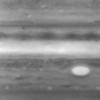
|
-
PIA02851:
-
Still from High-Clouds Jupiter Movie
Full Resolution:
TIFF
(49.46 kB)
JPEG
(8.516 kB)
|

|
2000-12-12 |
Jupiter
|
Cassini-Huygens
|
Imaging Science Subsystem
|
400x400x1 |
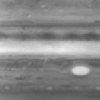
|
-
PIA02850:
-
Movie of High Clouds on Jupiter

Full Resolution:
|

|
2000-12-06 |
Jupiter
|
Cassini-Huygens
|
ISS - Narrow Angle
|
400x520x1 |

|
-
PIA02838:
-
Northern Belt of Jupiter
Full Resolution:
TIFF
(145 kB)
JPEG
(29.71 kB)
|

|
2000-12-06 |
Jupiter
|
Cassini-Huygens
|
ISS - Narrow Angle
|
559x553x3 |
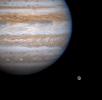
|
-
PIA02837:
-
Eyeing Ganymede
Full Resolution:
TIFF
(469.3 kB)
JPEG
(29.86 kB)
|

|
2000-11-21 |
Jupiter
|
Cassini-Huygens
|
ISS - Narrow Angle
|
400x400x1 |
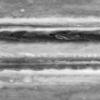
|
-
PIA02832:
-
Still from Processed Movie of Zonal Jets
Full Resolution:
TIFF
(60.02 kB)
JPEG
(15.09 kB)
|

|
2000-11-21 |
Jupiter
|
Cassini-Huygens
|
ISS - Narrow Angle
|
400x400x1 |
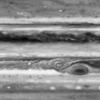
|
-
PIA02830:
-
Still from Red Spot Movie
Full Resolution:
TIFF
(65.11 kB)
JPEG
(16.28 kB)
|

|
2000-11-21 |
Jupiter
|
Cassini-Huygens
|
ISS - Narrow Angle
|
400x400x1 |
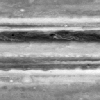
|
-
PIA02831:
-
Processed Movie of Zonal Jets

Full Resolution:
|

|
2000-11-21 |
Jupiter
|
Cassini-Huygens
|
ISS - Narrow Angle
|
400x400x1 |
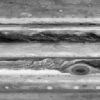
|
-
PIA02829:
-
Red Spot Movie

Full Resolution:
|

|
2000-11-06 |
Jupiter
|
Cassini-Huygens
|
ISS - Narrow Angle
|
889x859x1 |
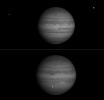
|
-
PIA02826:
-
Jupiter and Europa in Near Infrared
Full Resolution:
TIFF
(196.3 kB)
JPEG
(21.13 kB)
|

|
2000-11-06 |
Jupiter
|
Cassini-Huygens
|
ISS - Narrow Angle
|
1377x1377x3 |
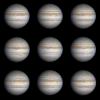
|
-
PIA02825:
-
Nine Frames as Jupiter Turns
Full Resolution:
TIFF
(2.757 MB)
JPEG
(100.6 kB)
|

|
2000-10-26 |
Jupiter
|
Galileo
|
Near Infrared Mapping Spectrometer
|
2769x1542x3 |
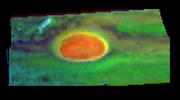
|
-
PIA02569:
-
Ammonia Ice near Jupiter's Great Red Spot
Full Resolution:
TIFF
(7.819 MB)
JPEG
(148.5 kB)
|

|
2000-10-26 |
Io
|
Galileo
|
Solid-State Imaging
|
1152x564x1 |
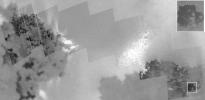
|
-
PIA02568:
-
Galileo Takes a Close-up Look at Prometheus
Full Resolution:
TIFF
(209.3 kB)
JPEG
(67.37 kB)
|

|
2000-10-26 |
Io
|
Galileo
|
Solid-State Imaging
|
413x900x3 |

|
-
PIA02567:
-
Giant Lava Flow on Io, in Color
Full Resolution:
TIFF
(1.187 MB)
JPEG
(44.4 kB)
|

|
2000-10-26 |
Io
|
Galileo
|
Solid-State Imaging
|
1152x483x3 |
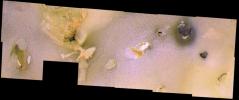
|
-
PIA02566:
-
Io's Chain of Craters
Full Resolution:
TIFF
(1.389 MB)
JPEG
(93.06 kB)
|

|
2000-10-26 |
Io
|
Galileo
|
Solid-State Imaging
|
889x766x3 |
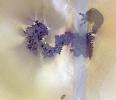
|
-
PIA02565:
-
Sources of Volcanic Plumes Near Prometheus
Full Resolution:
TIFF
(1.988 MB)
JPEG
(98.6 kB)
|

|
2000-10-26 |
Io
|
Galileo
|
Solid-State Imaging
|
900x750x3 |
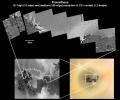
|
-
PIA02564:
-
Io's Prometheus Volcano at Various Resolutions
Full Resolution:
TIFF
(739.5 kB)
JPEG
(93.19 kB)
|

|
2000-10-26 |
Io
|
Galileo
|
Solid-State Imaging
|
782x752x1 |
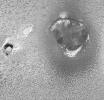
|
-
PIA02563:
-
Camaxtli Patera, An Active Volcanic Center on Io
Full Resolution:
TIFF
(638.4 kB)
JPEG
(169.6 kB)
|

|
2000-10-26 |
Io
|
Galileo
|
Solid-State Imaging
|
1152x899x1 |
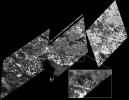
|
-
PIA02562:
-
Very High Resolution View of Io's Surface
Full Resolution:
TIFF
(292 kB)
JPEG
(137.4 kB)
|

|
2000-10-23 |
Jupiter
|
Cassini-Huygens
|
ISS - Narrow Angle
|
750x250x1 |
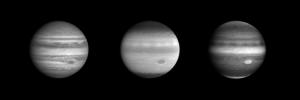
|
-
PIA02822:
-
Jupiter in blue, ultraviolet and Near Infrared
Full Resolution:
TIFF
(42.75 kB)
JPEG
(8.874 kB)
|

|
2000-10-23 |
Jupiter
|
Hubble Space Telescope
|
WFPC2
|
693x485x1 |
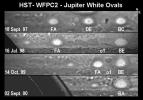
|
-
PIA02823:
-
Oval Storms Merging on Jupiter
Full Resolution:
TIFF
(223.6 kB)
JPEG
(43.14 kB)
|

|
2000-10-23 |
Jupiter
|
Cassini-Huygens
|
ISS - Narrow Angle
|
528x522x3 |
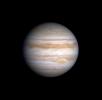
|
-
PIA02821:
-
Jupiter's Great Red Spot in Cassini Image
Full Resolution:
TIFF
(222.3 kB)
JPEG
(11.32 kB)
|

|
2000-10-10 |
Jupiter
|
Cassini-Huygens
|
ISS - Narrow Angle
|
717x462x3 |
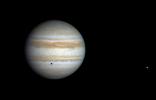
|
-
PIA02972:
-
Jupiter in Color, by Cassini
Full Resolution:
TIFF
(200.3 kB)
JPEG
(11.54 kB)
|

|
2000-10-05 |
Jupiter
|
Cassini-Huygens
|
ISS - Narrow Angle
|
633x635x1 |
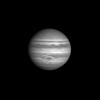
|
-
PIA02666:
-
Cassini "First-Look" Images of Jupiter
Full Resolution:
TIFF
(52.08 kB)
JPEG
(10.67 kB)
|

|
2000-09-25 |
Europa
|
Galileo
|
Solid-State Imaging
|
4306x3306x3 |
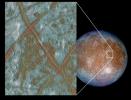
|
-
PIA03002:
-
Blocks in the Europan Crust Provide More Evidence of Subterranean Ocean
Full Resolution:
TIFF
(33.29 MB)
JPEG
(1.296 MB)
|

|
2000-09-25 |
J Rings
|
Galileo
|
Solid-State Imaging
|
4306x3306x3 |
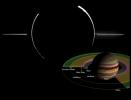
|
-
PIA03001:
-
Jovian Ring System Mosaic
Full Resolution:
TIFF
(3.623 MB)
JPEG
(338.8 kB)
|

|
2000-09-25 |
Jupiter
|
Galileo
|
Solid-State Imaging
|
4306x3306x3 |
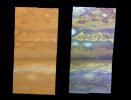
|
-
PIA03000:
-
Atmospheric Motion in Jupiter's Northern Hemisphere
Full Resolution:
TIFF
(22.55 MB)
JPEG
(540 kB)
|

|
2000-08-11 |
Europa
|
Galileo
|
Solid-State Imaging
|
3116x2652x1 |
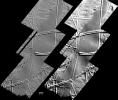
|
-
PIA02960:
-
Folds on Europa
Full Resolution:
TIFF
(3.943 MB)
JPEG
(775.9 kB)
|

|
2000-08-03 |
Ganymede
|
Galileo
|
Solid-State Imaging
|
2133x1600x3 |
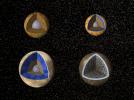
|
-
PIA01082:
-
Possible Internal Structures of the Galilean Satellites
Full Resolution:
TIFF
(4.452 MB)
JPEG
(474.8 kB)
|

|
2000-07-10 |
Europa
|
Galileo
|
Near Infrared Mapping Spectrometer
|
950x650x3 |
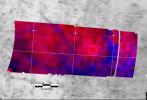
|
-
PIA02561:
-
Europa Impact Crater
Full Resolution:
TIFF
(904.6 kB)
JPEG
(55.73 kB)
|

|
2000-06-08 |
Io
|
Voyager
|
|
1700x1500x3 |
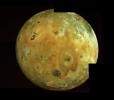
|
-
PIA02294:
-
Io 2x2 Mosaic
Full Resolution:
TIFF
(5.675 MB)
JPEG
(145.5 kB)
|

|
2000-05-31 |
Io
|
Galileo
|
Near Infrared Mapping Spectrometer
|
1130x550x3 |
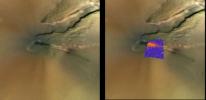
|
-
PIA02560:
-
Temperature Map of Pele, Io
Full Resolution:
TIFF
(1.376 MB)
JPEG
(57.62 kB)
|

|
2000-05-31 |
Io
|
Galileo
|
Near Infrared Mapping Spectrometer
|
850x410x1 |
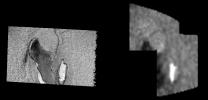
|
-
PIA02559:
-
Sulphur Dioxide on the Chaac Region of Io
Full Resolution:
TIFF
(145.7 kB)
JPEG
(35.13 kB)
|

|
2000-05-31 |
Io
|
Galileo
|
Near Infrared Mapping Spectrometer
|
890x376x3 |
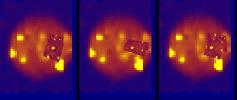
|
-
PIA02558:
-
Myriad of Hot Spots on Io
Full Resolution:
TIFF
(56.56 kB)
JPEG
(27.49 kB)
|

|
2000-05-31 |
Io
|
Galileo
|
Solid-State Imaging
|
618x850x1 |

|
-
PIA02557:
-
Lava Flows and Ridged Plains at Prometheus, Io
Full Resolution:
TIFF
(460.9 kB)
JPEG
(76.71 kB)
|

|
2000-05-31 |
Io
|
Galileo
|
Solid-State Imaging
|
800x600x1 |
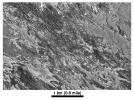
|
-
PIA02556:
-
Highest-Resolution Picture of Io
Full Resolution:
TIFF
(471.2 kB)
JPEG
(105.6 kB)
|

|
2000-05-31 |
Io
|
Galileo
|
Solid-State Imaging
|
875x900x1 |

|
-
PIA02555:
-
Shamshu Mons and Patera, Io
Full Resolution:
TIFF
(251 kB)
JPEG
(83.46 kB)
|

|
2000-05-31 |
Io
|
Galileo
|
Solid-State Imaging
|
643x566x3 |
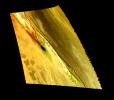
|
-
PIA02554:
-
Colorized View of Zal Region, Io
Full Resolution:
TIFF
(564.4 kB)
JPEG
(39.15 kB)
|

|
2000-05-31 |
Io
|
Galileo
|
Solid-State Imaging
|
506x411x3 |
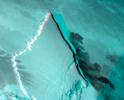
|
-
PIA02553:
-
Stereo Image of Zal Patera and Neighboring Mountain, Io
Full Resolution:
TIFF
(532.5 kB)
JPEG
(23.59 kB)
|

|
2000-05-31 |
Io
|
Galileo
|
Solid-State Imaging
|
876x900x3 |

|
-
PIA02552:
-
Stereo Image of Tvashtar Catena, Io
Full Resolution:
TIFF
(1.615 MB)
JPEG
(96.08 kB)
|

|
2000-05-31 |
Io
|
Galileo
|
Solid-State Imaging
|
1152x605x1 |
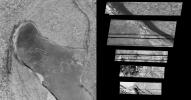
|
-
PIA02551:
-
Snapshots of Chaac: Io's Calderas Up Close
Full Resolution:
TIFF
(215.1 kB)
JPEG
(89.51 kB)
|

|
2000-05-31 |
Io
|
Galileo
|
Solid-State Imaging
|
800x800x3 |
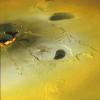
|
-
PIA02550:
-
Ongoing Volcanic Eruption at Tvashtar Catena, Io
Full Resolution:
TIFF
(2.248 MB)
JPEG
(81.64 kB)
|

|
2000-05-25 |
Io
|
Voyager
|
VG ISS - Narrow Angle
|
420x279x1 |
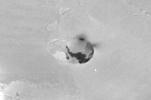
|
-
PIA02288:
-
Io Caldera
Full Resolution:
TIFF
(75.66 kB)
JPEG
(9.196 kB)
|

|
2000-05-25 |
Ganymede
|
Voyager
|
VG ISS - Narrow Angle
|
1594x797x1 |
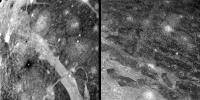
|
-
PIA02281:
-
Ganymede - Surface
Full Resolution:
TIFF
(1.565 MB)
JPEG
(392.5 kB)
|

|
2000-05-25 |
Ganymede
|
Voyager
|
VG ISS - Narrow Angle
|
786x1722x1 |

|
-
PIA02282:
-
Ganymede - Close Up Photos
Full Resolution:
TIFF
(1.036 MB)
JPEG
(232.3 kB)
|

|
2000-05-25 |
Io
|
Voyager
|
VG ISS - Narrow Angle
|
765x730x1 |
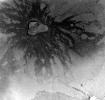
|
-
PIA02280:
-
Io
Full Resolution:
TIFF
(591.1 kB)
JPEG
(155.9 kB)
|

|
2000-05-25 |
Ganymede
|
Voyager
|
VG ISS - Narrow Angle
|
796x796x1 |
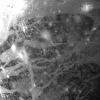
|
-
PIA02279:
-
Ganymede
Full Resolution:
TIFF
(632.4 kB)
JPEG
(107.2 kB)
|

|
2000-05-25 |
Ganymede
|
Voyager
|
VG ISS - Narrow Angle
|
796x796x1 |
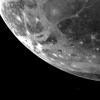
|
-
PIA02278:
-
Ganymede
Full Resolution:
TIFF
(404 kB)
JPEG
(71.26 kB)
|

|
2000-05-25 |
Ganymede
|
Voyager
|
VG ISS - Narrow Angle
|
796x799x1 |
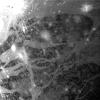
|
-
PIA02286:
-
Ganymede Varied Terrain
Full Resolution:
TIFF
(636.9 kB)
JPEG
(110.3 kB)
|

|
2000-05-25 |
Callisto
|
Voyager
|
VG ISS - Narrow Angle
|
797x797x1 |
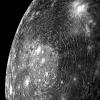
|
-
PIA02277:
-
Callisto Basin
Full Resolution:
TIFF
(663.6 kB)
JPEG
(142.3 kB)
|

|
2000-05-25 |
Io
|
Voyager
|
VG ISS - Narrow Angle
|
430x290x1 |
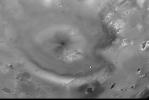
|
-
PIA02287:
-
Io Pele Plume
Full Resolution:
TIFF
(103 kB)
JPEG
(15.36 kB)
|

|
2000-05-18 |
Io
|
Galileo
|
Near Infrared Mapping Spectrometer
|
1060x767x3 |
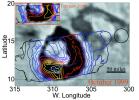
|
-
PIA02549:
-
Temperature Comparison at Loki
Full Resolution:
TIFF
(291.5 kB)
JPEG
(133.3 kB)
|

|
2000-05-18 |
Io
|
Galileo
|
Near Infrared Mapping Spectrometer
|
661x556x3 |
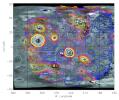
|
-
PIA02548:
-
Temperature Map of Io's Night Side
Full Resolution:
TIFF
(924.6 kB)
JPEG
(82.66 kB)
|

|
2000-05-18 |
Io
|
Galileo
|
Photopolarimeter-Radiometer
|
1225x827x3 |

|
-
PIA02547:
-
The Role of Sulfur in Io's Volcanoes
Full Resolution:
TIFF
(1.611 MB)
JPEG
(75.39 kB)
|

|
2000-05-18 |
Io
|
Galileo
|
Photopolarimeter-Radiometer
|
710x746x3 |

|
-
PIA02546:
-
Sulfur Gas in Pele's Plume
Full Resolution:
TIFF
(544.7 kB)
JPEG
(42.15 kB)
|

|
2000-05-18 |
Io
|
Galileo
|
Solid-State Imaging
|
881x778x3 |
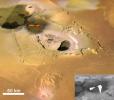
|
-
PIA02545:
-
Eruption at Tvashtar Catena, Io, in Color
Full Resolution:
TIFF
(1.946 MB)
JPEG
(86.57 kB)
|

|
2000-05-18 |
Io
|
Galileo
|
Near Infrared Mapping Spectrometer
|
504x604x3 |

|
-
PIA02544:
-
Culann Patera/NIMS
Full Resolution:
TIFF
(478.6 kB)
JPEG
(16.82 kB)
|

|
2000-05-18 |
Io
|
Galileo
|
Near Infrared Mapping Spectrometer
|
2000x2028x3 |

|
-
PIA02543:
-
Prometheus Silicates/Sulfur dioxide/NIMS
Full Resolution:
TIFF
(4.722 MB)
JPEG
(347.4 kB)
|

|
2000-05-18 |
Io
|
Galileo
|
Near Infrared Mapping Spectrometer
|
1192x784x3 |
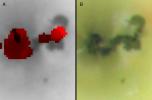
|
-
PIA02542:
-
Prometheus/NIMS
Full Resolution:
TIFF
(1.242 MB)
JPEG
(29.71 kB)
|

|
2000-05-18 |
Io
|
Galileo
|
Near Infrared Mapping Spectrometer
|
1000x1200x3 |

|
-
PIA02541:
-
Loki Patera/NIMS
Full Resolution:
TIFF
(639.3 kB)
JPEG
(78.9 kB)
|

|
2000-05-18 |
Io
|
Galileo
|
Solid-State Imaging
|
381x900x1 |

|
-
PIA02540:
-
Rifting at Hi'iaka Patera, Io?
Full Resolution:
TIFF
(156.2 kB)
JPEG
(61.54 kB)
|

|
2000-05-18 |
Io
|
Galileo
|
Solid-State Imaging
|
1152x491x1 |
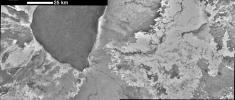
|
-
PIA02539:
-
Bright Lava Flows at Emakong Patera, Io
Full Resolution:
TIFF
(247.5 kB)
JPEG
(105.2 kB)
|

|
2000-05-18 |
Io
|
Galileo
|
Solid-State Imaging
|
1152x443x1 |
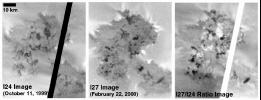
|
-
PIA02538:
-
Changes Observed in Just 4.5 Months at Prometheus, Io
Full Resolution:
TIFF
(162.1 kB)
JPEG
(69.06 kB)
|

|
2000-05-18 |
Io
|
Galileo
|
Solid-State Imaging
|
1152x214x1 |

|
-
PIA02537:
Lava Flows at Zamama, Io
Full Resolution:
TIFF
(75.33 kB)
JPEG
(39.4 kB)
|

|
2000-05-18 |
Io
|
Galileo
|
Solid-State Imaging
|
1152x758x1 |
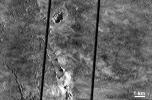
|
-
PIA02536:
-
1997 Lava Flows Near Pillan Patera, Io
Full Resolution:
TIFF
(366.3 kB)
JPEG
(169.6 kB)
|

|
2000-05-18 |
Io
|
Galileo
|
Solid-State Imaging
|
900x689x3 |
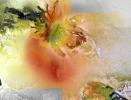
|
-
PIA02535:
-
Culann Patera, Io, in False Color
Full Resolution:
TIFF
(2.192 MB)
JPEG
(105.6 kB)
|

|
2000-04-24 |
Callisto
|
Voyager
|
VG ISS - Narrow Angle
|
800x800x1 |
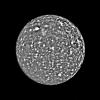
|
-
PIA02253:
-
Callisto
Full Resolution:
TIFF
(275.5 kB)
JPEG
(66.44 kB)
|

|
2000-04-24 |
Amalthea
|
Galileo
|
Solid-State Imaging
|
860x410x1 |
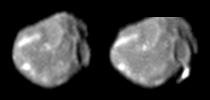
|
-
PIA02532:
-
Bright Streak on Amalthea
Full Resolution:
TIFF
(134.2 kB)
JPEG
(14.86 kB)
|

|
2000-04-24 |
Amalthea
|
Galileo
|
Solid-State Imaging
|
748x381x1 |
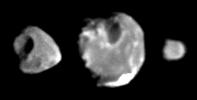
|
-
PIA02531:
-
Best images yet of Thebe, Amalthea and Metis
Full Resolution:
TIFF
(85.79 kB)
JPEG
(11.9 kB)
|

|
2000-04-24 |
Amalthea
|
Galileo
|
Solid-State Imaging
|
490x1190x1 |

|
-
PIA02530:
-
Jupiter Small Satellite Montage
Full Resolution:
TIFF
(138.7 kB)
JPEG
(19.02 kB)
|

|
2000-04-19 |
Io
|
Galileo
|
Solid-State Imaging
|
769x774x3 |
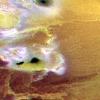
|
-
PIA02534:
-
Terrain near Io's South Pole, in Color
Full Resolution:
TIFF
(1.812 MB)
JPEG
(84.44 kB)
|

|
2000-04-19 |
Io
|
Galileo
|
Solid-State Imaging
|
799x739x3 |
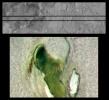
|
-
PIA02533:
-
Highest Resolution of Lava Flows on Io
Full Resolution:
TIFF
(1.276 MB)
JPEG
(90.21 kB)
|

|
2000-04-19 |
Europa
|
Galileo
|
Near Infrared Mapping Spectrometer
|
700x600x3 |
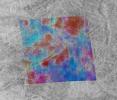
|
-
PIA02529:
-
Europa: Sea Salts or Battery Acid
Full Resolution:
TIFF
(976.3 kB)
JPEG
(64.07 kB)
|

|
2000-04-06 |
Jupiter
|
Voyager
|
VG ISS - Narrow Angle
|
260x260x1 |
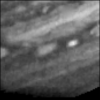
|
-
PIA02257:
-
Voyager 2 Jupiter Eruption Movie

Full Resolution:
|

|
2000-04-06 |
Jupiter
|
Voyager
|
VG ISS - Narrow Angle
|
213x160x1 |
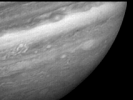
|
-
PIA02258:
-
Voyager 1 Jupiter Southern Hemisphere Movie

Full Resolution:
|

|
2000-04-06 |
Jupiter
|
Voyager
|
VG ISS - Narrow Angle
|
318x240x1 |
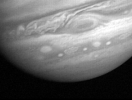
|
-
PIA02259:
-
Voyager 1 Red Spot Movie

Full Resolution:
|

|
2000-03-23 |
Io
|
Voyager
|
VG ISS - Narrow Angle
|
505x451x1 |
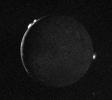
|
-
PIA02254:
-
Io - Crescent with Plumes
Full Resolution:
TIFF
(99.45 kB)
JPEG
(47.51 kB)
|

|
2000-03-23 |
Ganymede
|
Voyager
|
VG ISS - Narrow Angle
|
794x794x1 |
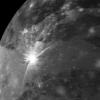
|
-
PIA02252:
-
Ganymede
Full Resolution:
TIFF
(490.6 kB)
JPEG
(65.79 kB)
|

|
2000-03-23 |
J Rings
|
Voyager
|
VG ISS - Narrow Angle
|
621x672x1 |

|
-
PIA02251:
-
Jupiter's Ring
Full Resolution:
TIFF
(231.5 kB)
JPEG
(51.08 kB)
|

|
2000-03-23 |
Io
|
Voyager
|
VG ISS - Narrow Angle
|
790x790x1 |
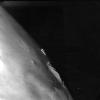
|
-
PIA02250:
-
Io - Southern Hemisphere
Full Resolution:
TIFF
(404.1 kB)
JPEG
(37.77 kB)
|

|
2000-03-23 |
Io
|
Voyager
|
VG ISS - Narrow Angle
|
796x784x1 |
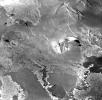
|
-
PIA02249:
-
Io - South Pole
Full Resolution:
TIFF
(484.7 kB)
JPEG
(112.2 kB)
|

|
2000-03-23 |
Io
|
Voyager
|
VG ISS - Narrow Angle
|
795x795x1 |
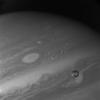
|
-
PIA02248:
-
Io
Full Resolution:
TIFF
(323.5 kB)
JPEG
(26.52 kB)
|

|
2000-03-06 |
Europa
|
Galileo
|
Solid-State Imaging
|
900x900x1 |
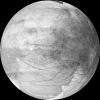
|
-
PIA02528:
-
Europa's Jupiter-Facing Hemisphere
Full Resolution:
TIFF
(246.1 kB)
JPEG
(126.4 kB)
|

|
2000-03-06 |
Io
|
Galileo
|
Solid-State Imaging
|
712x900x3 |

|
-
PIA02527:
-
Zal Patera, Io, in color
Full Resolution:
TIFF
(2.005 MB)
JPEG
(75.34 kB)
|

|
2000-03-06 |
Io
|
Galileo
|
Solid-State Imaging
|
1152x807x3 |
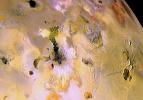
|
-
PIA02526:
-
Ionian Mountains and Calderas, in Color
Full Resolution:
TIFF
(3.203 MB)
JPEG
(170.4 kB)
|

|
2000-01-04 |
Ganymede
|
Voyager
|
VG ISS - Narrow Angle
|
795x795x1 |
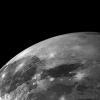
|
-
PIA02233:
-
Ganymede - high resolution
Full Resolution:
TIFF
(271.9 kB)
JPEG
(63.94 kB)
|

|
2000-01-04 |
Io
|
Voyager
|
VG ISS - Narrow Angle
|
794x794x1 |
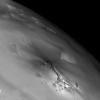
|
-
PIA02232:
-
Io - High Res Limb
Full Resolution:
TIFF
(292.4 kB)
JPEG
(37.1 kB)
|

|
2000-01-04 |
Io
|
Voyager
|
VG ISS - Narrow Angle
|
720x783x1 |

|
-
PIA02231:
-
Io - high resolution
Full Resolution:
TIFF
(407.9 kB)
JPEG
(28.7 kB)
|

|
1999-12-17 |
Io
|
Galileo
|
|
717x653x3 |
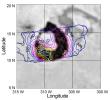
|
-
PIA02524:
-
Galileo PPR Temperature Maps of Loki in October 1999
Full Resolution:
TIFF
(140.3 kB)
JPEG
(61.33 kB)
|

|
1999-12-17 |
Io
|
Galileo
|
Solid-State Imaging
|
717x653x3 |
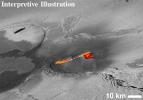
|
-
PIA02525:
-
Interpreted Lava Fountains on Io
Full Resolution:
TIFF
(1.3 MB)
JPEG
(124.8 kB)
|

|
1999-12-17 |
Io
|
Galileo
|
|
630x261x3 |
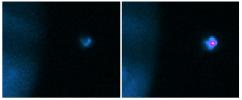
|
-
PIA02523:
-
Earth-based images of the Fall 1999 Loki Eruption
Full Resolution:
TIFF
(162.4 kB)
JPEG
(13.14 kB)
|

|
1999-12-17 |
Io
|
Galileo
|
|
688x744x3 |

|
-
PIA02522:
-
Earth-Based Observations of a Fire Fountain on Io
Full Resolution:
TIFF
(58.53 kB)
JPEG
(12.82 kB)
|

|
1999-12-17 |
Io
|
Galileo
|
Near Infrared Mapping Spectrometer
|
800x400x3 |
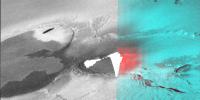
|
-
PIA02521:
-
Eruption from High Latitude Caldera Viewed by the Near-Infrared Mapping Spectrometer (NIMS)
Full Resolution:
TIFF
(482.4 kB)
JPEG
(46.98 kB)
|

|
1999-12-17 |
Io
|
Galileo
|
Solid-State Imaging
|
797x398x1 |
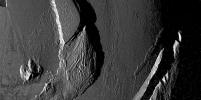
|
-
PIA02520:
-
Mountains on Io
Full Resolution:
TIFF
(267.5 kB)
JPEG
(72.92 kB)
|

|
1999-12-17 |
Io
|
Galileo
|
Solid-State Imaging
|
1152x280x1 |

|
-
PIA02519:
Lava Fountains on Io
Full Resolution:
TIFF
(139.9 kB)
JPEG
(56.66 kB)
|

|
1999-12-17 |
Io
|
Galileo
|
Solid-State Imaging
|
797x900x3 |

|
-
PIA02518:
-
Bright Channelized Lava Flows on Io
Full Resolution:
TIFF
(1.55 MB)
JPEG
(115.7 kB)
|

|
1999-12-17 |
Io
|
Galileo
|
Solid-State Imaging
|
1152x613x1 |
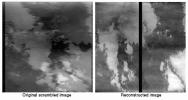
|
-
PIA02517:
-
Reconstruction of Scrambled Io Images
Full Resolution:
TIFF
(245.3 kB)
JPEG
(96.38 kB)
|

|
1999-11-19 |
Io
|
Galileo
|
Near Infrared Mapping Spectrometer
|
841x631x3 |
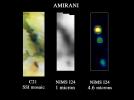
|
-
PIA02516:
-
Galileo NIMS Observes Amirani
Full Resolution:
TIFF
(274.2 kB)
JPEG
(34.6 kB)
|

|
1999-11-19 |
Io
|
Galileo
|
Near Infrared Mapping Spectrometer
|
1157x841x3 |
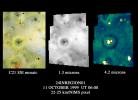
|
-
PIA02515:
-
Io's Prometheus Regions as Viewed by Galileo NIMS
Full Resolution:
TIFF
(870 kB)
JPEG
(76.75 kB)
|

|
1999-11-19 |
Io
|
Galileo
|
Near Infrared Mapping Spectrometer
|
1157x1241x3 |

|
-
PIA02514:
-
Loki as viewed by Galileo NIMS
Full Resolution:
TIFF
(638.9 kB)
JPEG
(92.45 kB)
|

|
1999-11-19 |
Io
|
Galileo
|
Solid-State Imaging
|
1286x1447x1 |

|
-
PIA02513:
-
Collapsing Mountains on Io
Full Resolution:
TIFF
(1.291 MB)
JPEG
(251.9 kB)
|

 Planetary Data System
Planetary Data System

















































































































